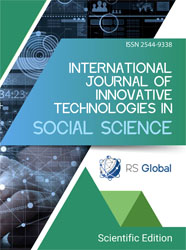ARTIFICIAL INTELLIGENCE – THE RISK OF MISUSE AND THE PATH TO CRIME
Abstract
This study examines the transformations that societies have undergone as a result of technological advancement, with a particular focus on artificial intelligence as one of the most prominent aspects of this progress. It clarifies the concept of artificial intelligence and its historical development, and highlights its benefits in various fields such as education, medicine, and industry, thanks to its ability to learn and adapt rapidly. However, the study also draws attention to its increasing dangers, especially when misused, as it can be exploited in committing cybercrimes such as forgery, fraud, and media falsification. The study emphasizes the need for strict legislation to limit these risks, particularly given its potential impact on the job market and on social and economic balances.
References
Haenlein, M., & Kaplan, A. (2019). A brief history of artificial intelligence: On the past, present, and future of artificial intelligence. California management review, 61(4), 5-14.
Johnson-Laird, P. N. (1988). The computer and the mind: An introduction to cognitive science. Harvard University Press.
Kouroudis, I., Tanko, K. T., Karimipour, M., Ali, A. B., Kumar, D. K., Sudhakar, V., Gupta, R. K., Visoly-Fisher, I., Lira-Cantu, M., & Gagliardi, A. (2024). Artificial intelligence-based, wavelet-aided prediction of long-term outdoor performance of perovskite solar cells. ACS Energy Letters, 9(4), 1581-1586.
Menard, P., & Bott, G. J. (2025). Artificial intelligence misuse and concern for information privacy: New construct validation and future directions. Information Systems Journal, 35(1), 322-367.
Mhlanga, D. (2022). Human-centered artificial intelligence: The superlative approach to achieve sustainable development goals in the fourth industrial revolution. Sustainability, 14(13), 7804.
Ray, L. (2007). Globalization and everyday life. Routledge.
Spiridonov, M. S. (2023). Artificial intelligence technologies in criminal procedural proving. Journal of Digital Technologies and Law, 1(2).
Views:
89
Downloads:
62
Copyright (c) 2025 Mohamed Djemaa, Kheireddine Ziane

This work is licensed under a Creative Commons Attribution 4.0 International License.
All articles are published in open-access and licensed under a Creative Commons Attribution 4.0 International License (CC BY 4.0). Hence, authors retain copyright to the content of the articles.
CC BY 4.0 License allows content to be copied, adapted, displayed, distributed, re-published or otherwise re-used for any purpose including for adaptation and commercial use provided the content is attributed.











